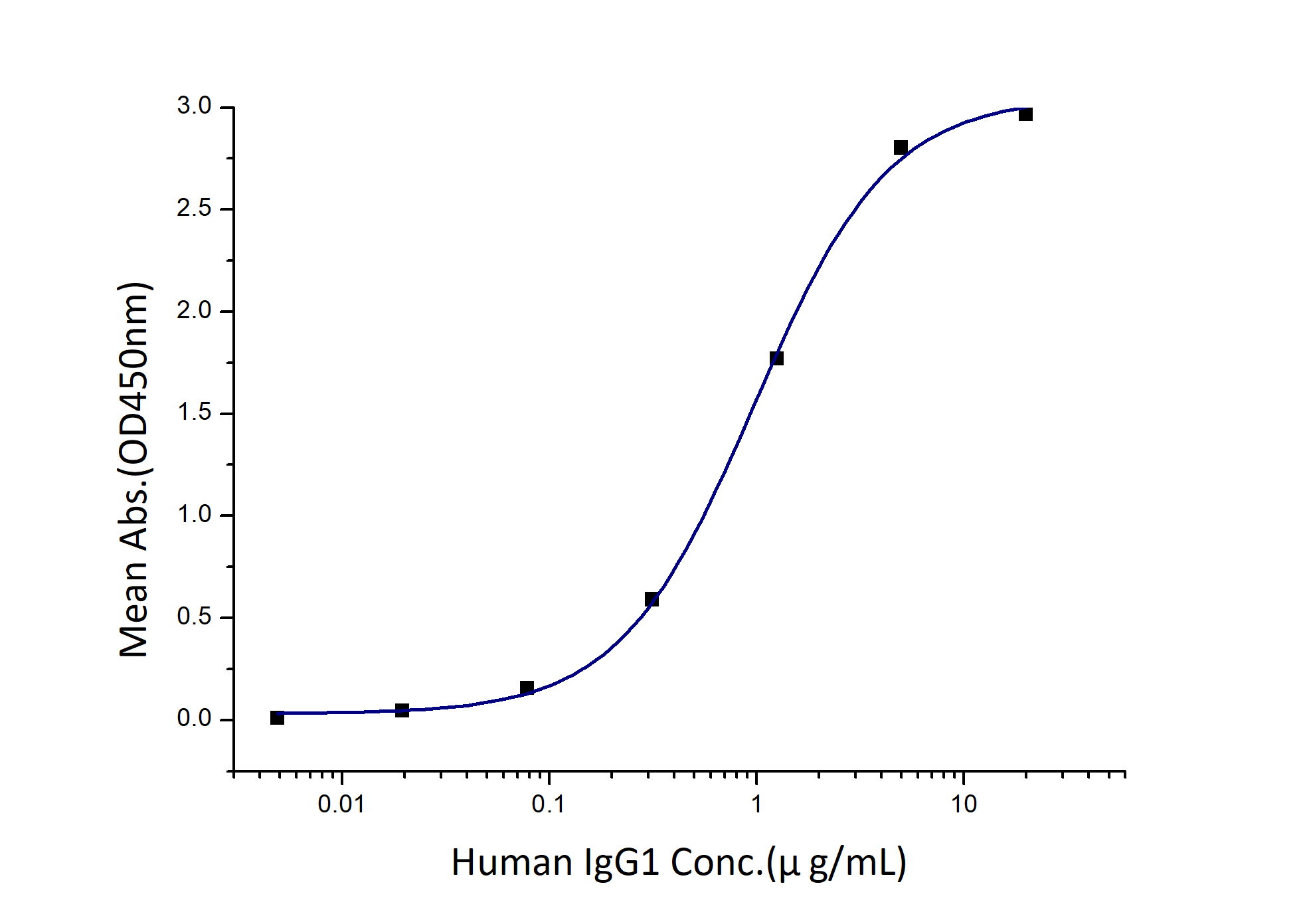Recombinant Human FCGR3A/CD16a (F176V) protein (Myc Tag, His Tag)
种属
Human
纯度
>90 %, SDS-PAGE
标签
Myc Tag, His Tag
生物活性
EC50: 0.5-2 μg/mL
验证数据展示
产品信息
| 纯度 | >90 %, SDS-PAGE |
| 内毒素 | <0.1 EU/μg protein, LAL method |
| 生物活性 |
Immobilized Human FCGR3A (F176V) (Myc tag, His tag) at 2 μg/mL (100 μL/well) can bind Human IgG1 with a linear range of 0.5-2 μg/mL. |
| 来源 | HEK293-derived Human FCGR3A protein Gly17-Gln208 (Accession# P08637, F176V) with a Myc tag and a His tag at the C-terminus. |
| 基因ID | 2214 |
| 蛋白编号 | P08637 |
| 预测分子量 | 24.3 kDa |
| SDS-PAGE | 38-60 kDa, reducing (R) conditions |
| 组分 | Lyophilized from 0.22 μm filtered solution in PBS, pH 7.4. Normally 5% trehalose and 5% mannitol are added as protectants before lyophilization. |
| 复溶 | Briefly centrifuge the tube before opening. Reconstitute at 0.1-0.5 mg/mL in sterile water. |
| 储存条件 |
It is recommended that the protein be aliquoted for optimal storage. Avoid repeated freeze-thaw cycles.
|
| 运输条件 | The product is shipped at ambient temperature. Upon receipt, store it immediately at the recommended temperature. |
背景信息
CD16, also known as the low affinity Fc gamma receptor III for IgG (FcγRIII), exists in two isoforms, FcγRIIIa (CD16a) and FcγRIIIb (CD16b), encoded by two nearly identical genes, FCGR3A and the FCGR3B. CD16a is expressed on NK cells, macrophages, and placental trophoblasts as a polypeptide-anchored transmembrane protein while CD16b is expressed on neutrophils in a glycosylphosphatidylinositol (GPI)-anchored form. CD16a forms a heteromeric structure with the Fc epsilon RI (gamma) and/or CD3 (zeta) subunits. CD16 mediates antibody-dependent cellular cytotoxicity (ADCC) and other antibody-dependent responses, such as phagocytosis.
参考文献:
1. S Nagarajan, et al. (1995) J Biol Chem. 270(43):25762-70. 2. J E Gessner, et al. (1995) J Biol Chem. 270(3):1350-61.


